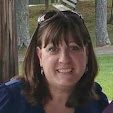The idea of Connected Learning is so fascinating, especially with the demographic of my students. Almost every student who comes through my door has had a negative experience with traditional education. Once they get comfortable and begin to share their reasons for not completing high school, words and phrases like bullying, invisibility, trauma, sickness, pregnancy, detention, etc start to be heard. Many of my students feel judged for one reason or another and it snowballed into a sort of self-fulfilling prophecy. For many of them, the situations may have been completely out of their control but the damage done to their confidence was lasting.
I love the idea of
Connected Learning for my students because it makes learning fun. It
shows them that they can be lifelong learners and that they have the ability to
reach their academic goals. At Parkland College Adult Education, we use
Connected Learning in three ways.
1) Bridge Courses - Each
semester we offer various Bridge Courses that combine the GED content our
students need to obtain their HS Diploma and the entry-level college material
for a field of study of their choice. This semester we are offering
Bridge Courses in Health, Manufacturing, Business and Information
Technology. For example, the students in the Health Bridge begin their
path to certification as a CAN. They can choose to continue and finish
that certification once enrolled in Parkland or they can choose to continue on
for a nursing degree.
2) College and Career
Readiness (CCR) – Our regular GED classes have transitioned to CCR classes,
meaning the students learn not only the GED content but also explore skills for
the workplace of college placement. This can include resumes, cover
letter, applications, financial aid, career cruising, etc. I consider this
Connected Learning because we start by finding out the students’ individual
interests and work around those.
3) Content Areas – I teach
three content areas: Language Arts, Social Studies and Science, as well as the
U.S. Constitution. I try very hard to make these Connected Learning by
bringing in not only the student’s experiences but also their interests.
An example might be when we are practicing presentation skills, I have them
create a slideshow (workplace skill) around a social justice, constitutional or
citizenship topic they are passionate about (connected learning). Many times
they share personal experiences. They also have to write an overview of their
presentation (communication and essay skills) and they have to upload both to
COBRA (college campus software skills). They don’t realize it at first, but
these often end up being what they write about for the GED test or for a
college placement exam or application.
Connected Learning is also
used in my classroom for group discussion. Because I teach adults, the
conversations can get very in-depth and personal. Many of the topics we
discuss lead into personal stories that always enhance the material of the
lesson. Many of my students have shared experiences in real-world situations so
I feel like once the classroom has a sense of community, connected learning
takes place almost on a daily basis.



Since Connected Learning was drawn together on what we knew about learning, many teachers find that Connected Learning principles do resonate with their teaching that is the most forward and outward open or facing when interests can be drawn on and pursued and bridges between careers and coursework can be made, for instance. I think where this gets most radical is when the open, intergenerational network of connections becomes the peers who are supporting and even guiding and deciding the learning design, means, modes, and goals. This is very different from when students' interests are included in a class discussion though they both are interest-driven at the base. If you are interested, here is an annotated bibliography of several projects that have taken up Connected Learning to see the range of ways that CL has influence redesigns of education: https://citejournal.org/proofing/connected-teaching-and-learning-in-k-16-contexts-an-annotated-bibliography/
ReplyDeleteThank you for sharing! There are a plethora of great resources and links here that I will definitely be coming back to when I have more time to dive in!
ReplyDelete